Physical Address
304 North Cardinal St.
Dorchester Center, MA 02124
Neutrophils above parakeratosis in stratum corneum
Little to no serum in stratum corneum
Alternating neutrophils and parakeratosis in the stratum corneum (sandwich sign)
Neutrophilic spongiform pustules
Little spongiosis in adjacent epidermis
Tortuous blood vessels in dermal papillae
The appearance of psoriasis depends on the stage of the lesion and type of lesion. Early guttate lesions demonstrate no acanthosis. Established plaques demonstrate a characteristic pattern of regular acanthosis. Pustular psoriasis may never demonstrate acanthosis. Acral and intertriginous lesions of psoriasis commonly demonstrate a background of spongiosis, but spongiosis is distinctly absent from the surrounding epidermis in most other locations. Reiter disease and geographic tongue histologically look like psoriasis.
Collections of neutrophils within the stratum corneum:
Psoriasis, tinea, impetigo, Candida , seborrheic dermatitis, syphilis (PTICSS)
Regular, bulbous, club-shaped acanthosis
Thin superpapillary plates
Alternating neutrophils and parakeratosis in the stratum corneum (sandwich sign)
Little to no serum in stratum corneum
Neutrophilic spongiform pustules
Little spongiosis in adjacent epidermis
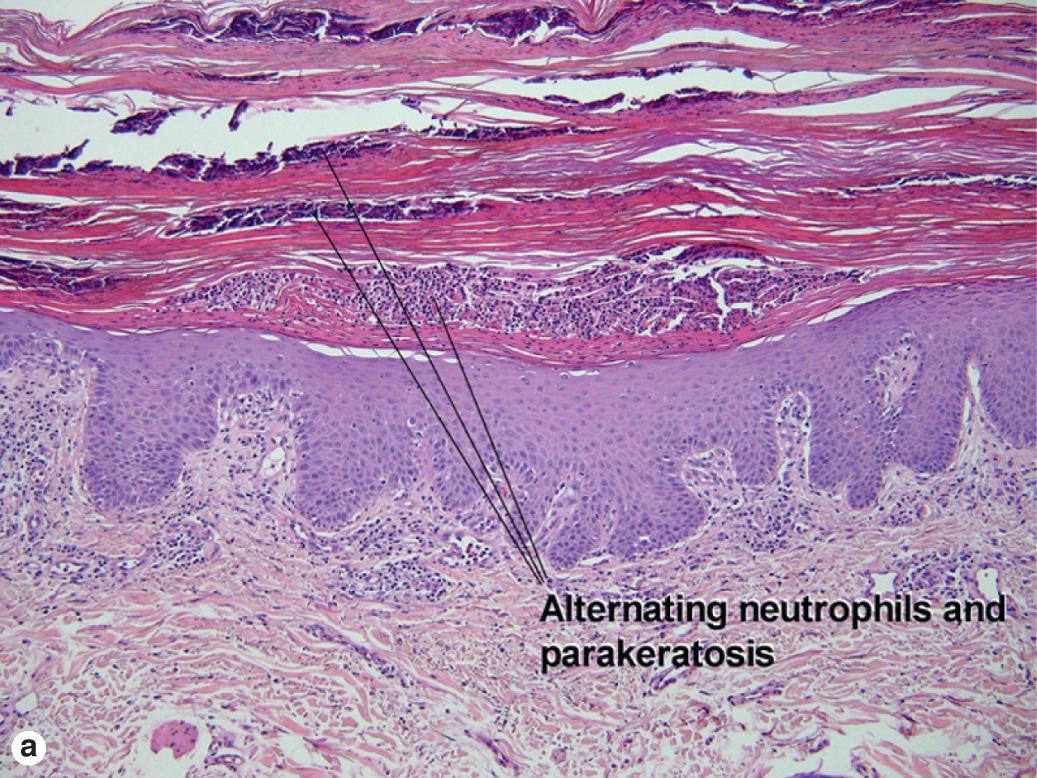
Collections of neutrophils within stratum corneum
Subcorneal pustules
Spongiform pustules
Subcorneal pustules: Candida, acropustulosis of infancy, transient neonatal pustular melanosis, Sneddon–Wilkinson (and IgA pemphigus), impetigo, pustular psoriasis, Staphylococcus scalded-skin syndrome (CAT SIPS, or an anagram of SIPS)
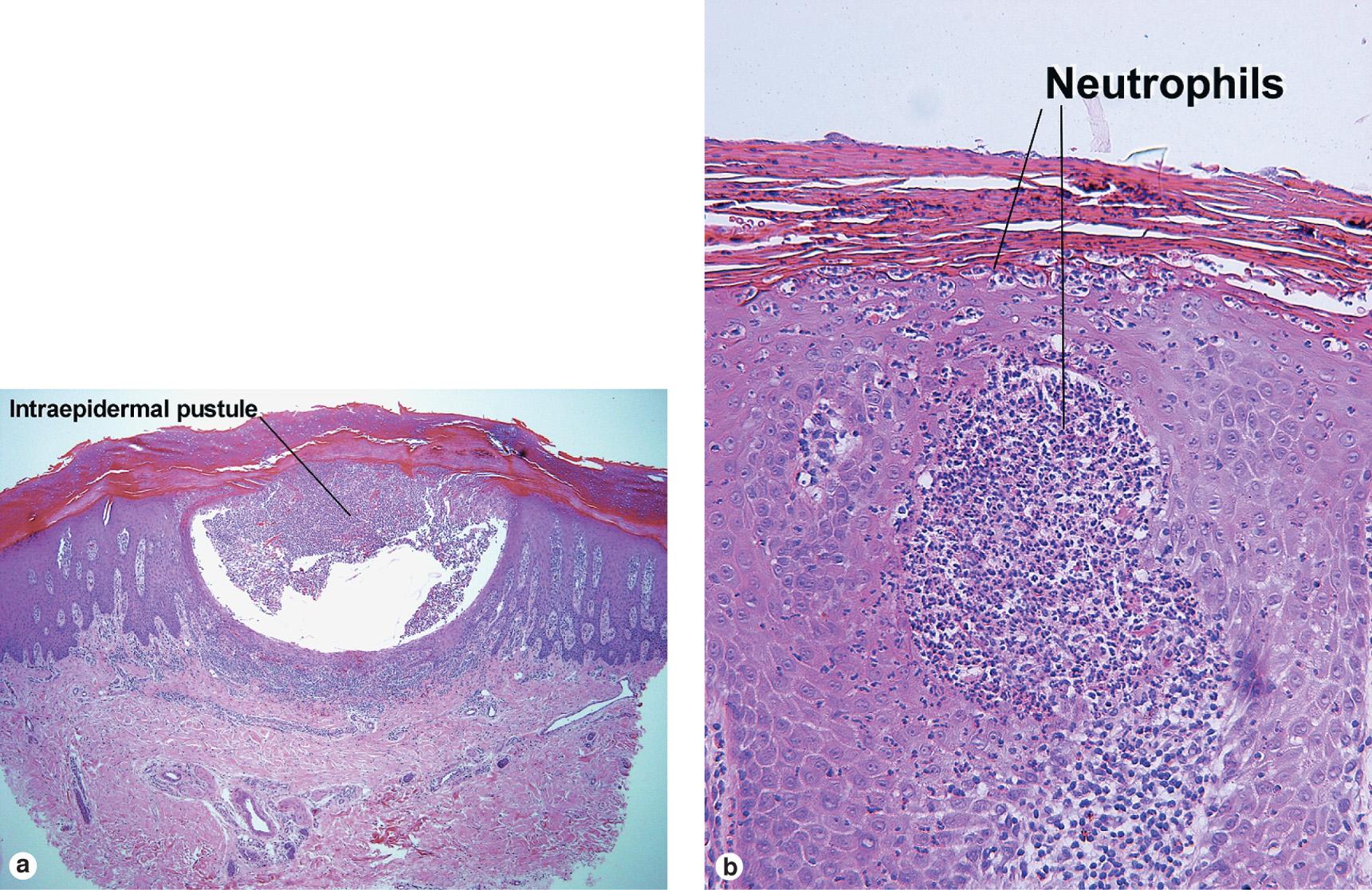
Neutrophils above parakeratosis
The key histologic feature of guttate psoriasis is a focus of neutrophils on top of parakeratosis (half of the sandwich sign, jelly up). The neutrophilic focus may be small and only visible in step sections. The focus often has a humplike configuration or resembles a child's drawing of a seagull.
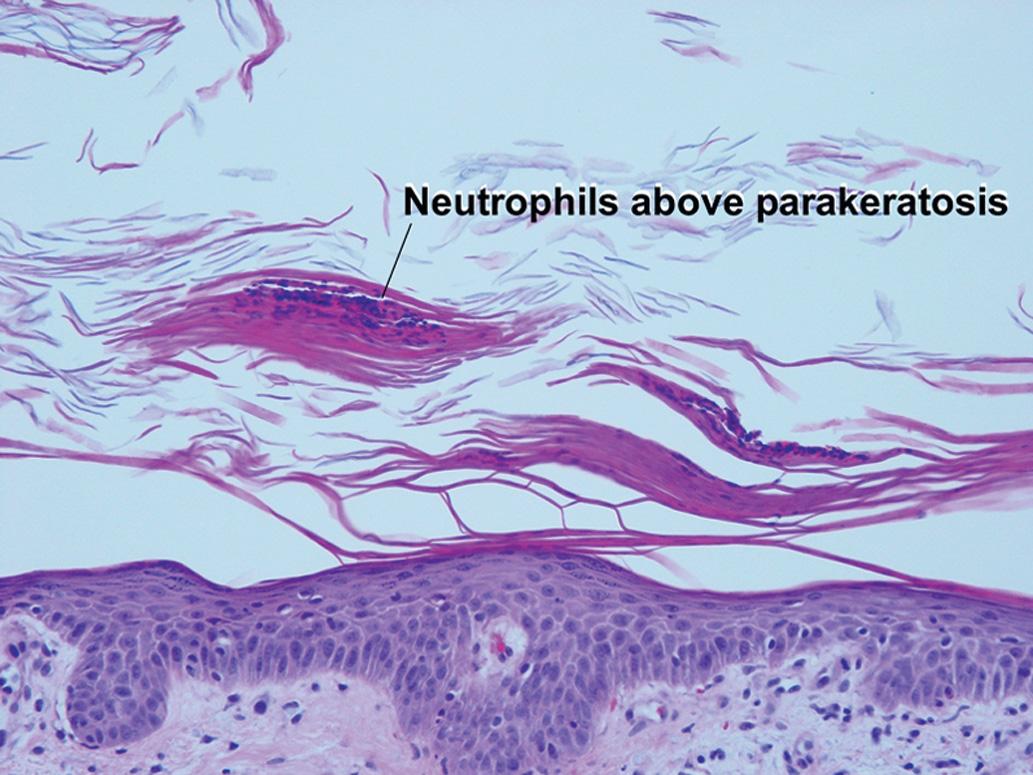
Alternating orthokeratosis and parakeratosis from left to right
Areas of orthokeratosis have a prominent granular layer
Areas of parakeratosis lack an underlying granular layer (see Chapter 2 )
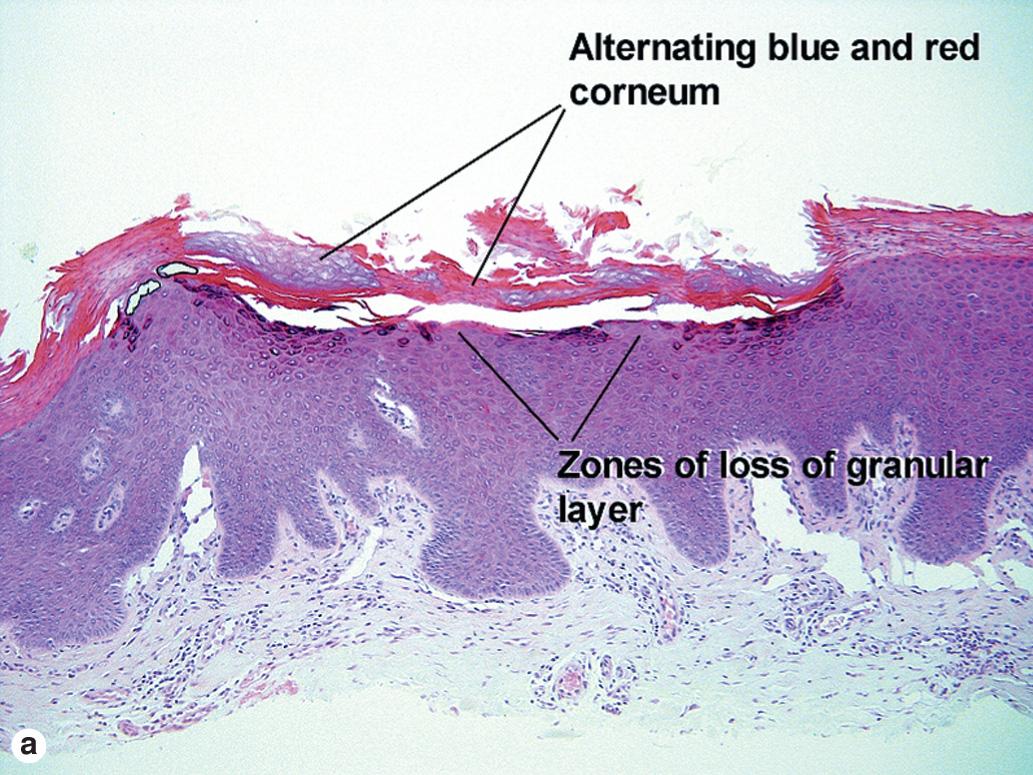
Epidermal collections of lymphocytes
Lymphocytes hyperchromatic and surrounded by white space (lump of coal on a pillow)
Epidermal lymphocytes larger, darker, and more angulated than lymphocytes in dermis
Little spongiosis in adjacent epidermis
Papillary dermal fibrosis
In areas, lymphocytes may also line up along the dermal epidermal junction
Bare underbelly sign (see Chapters 7 and 24 )
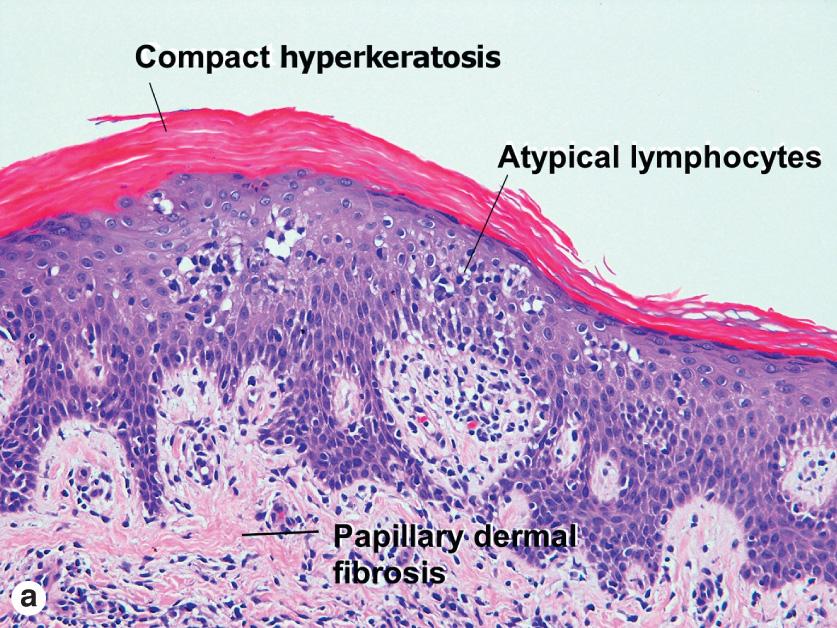
Vacuolar interface dermatitis together with elongated psoriasiform acanthosis
Vacuolar interface dermatitis together with interstitial dermal infiltrate (busy dermis)
Neutrophils in the stratum corneum
Plasma cells present in about two thirds of cases
Endothelial swelling obliterates the lumen of small vessels
Perivascular lymphocytes and histiocytes with visible cytoplasm (see Chapters 7 and 17 )
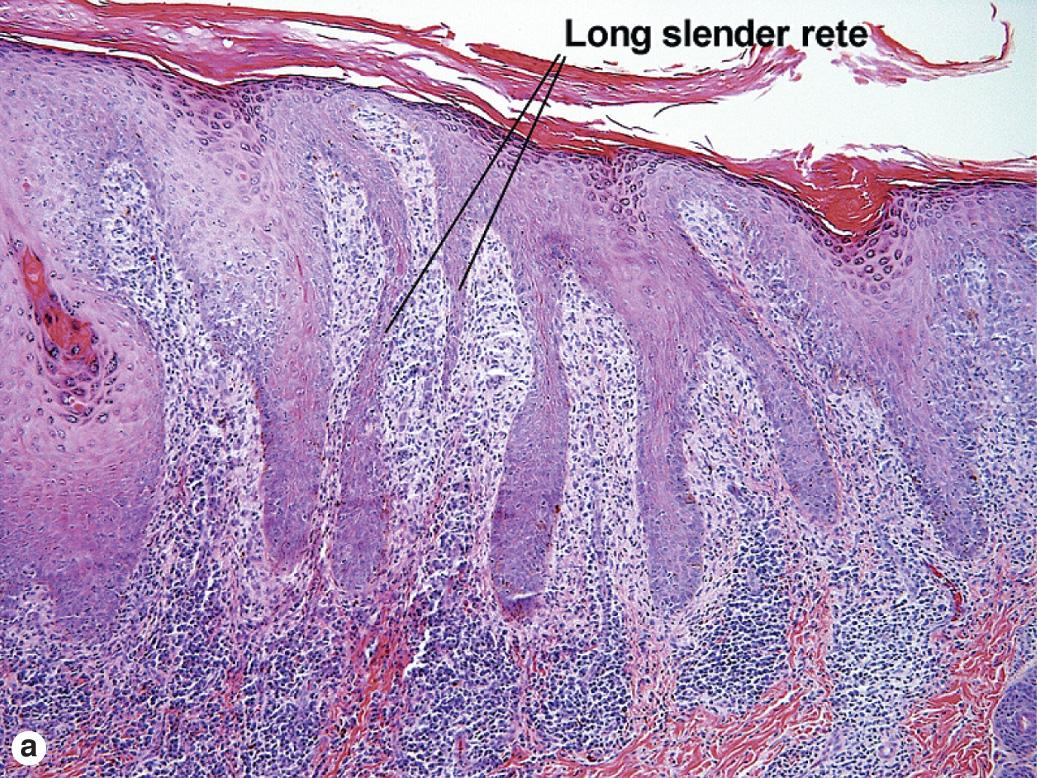
Plasma cells are commonly associated with:
Become a Clinical Tree membership for Full access and enjoy Unlimited articles
If you are a member. Log in here